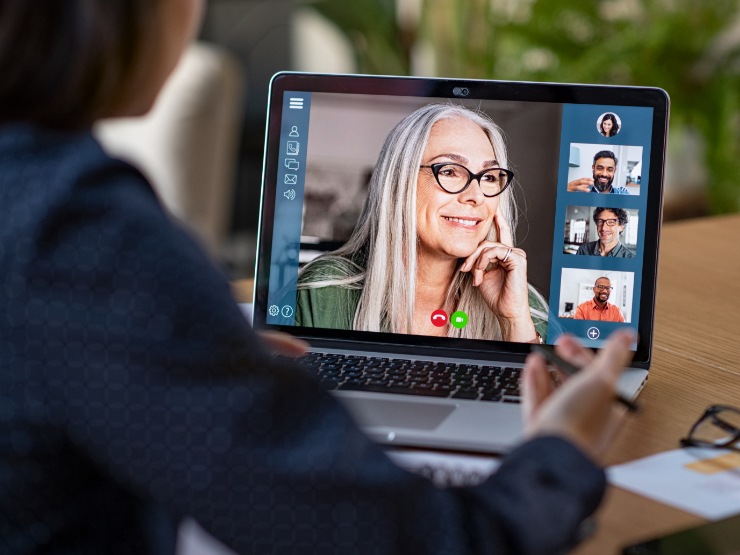-
Featured services
Think beyond the robots
The successful integration of AI and IoT in manufacturing will depend on effective change management, upskilling and rethinking business models.
Read the blog -
Services
View all services and productsLeverage our capabilities to accelerate your business transformation.
-
Services
Network Services
Popular Products
-
Services
Cloud
Popular Products
-
Cloud Architecture and Modernization
Discover how to achieve your business goals through cloud modernization practices, that deliver improved agility, reusability and scalability.
-
Cloud Optimization
Discover how to maximize operational excellence, business continuity and financial sustainability through our cloud-advanced optimization services.
-
-
Services
Consulting
-
-
Services
Data and Artificial intelligence
- AI and Intelligent Solutions
- Data/AI Strategy and Program
- Data Engineering and Platforms
- Data Governance and Management
- Data Visualization and Business Decision
- GenAI Consulting
- GenAI Platforms
- GenAI Industry Services
- GenAI Infrastructure Services
- GenAI Value Transformation
- View Data and Artificial Intelligence
-
Services
Technology Solutions
Client stories
-
Services
Global Data Centers
-
Services
CX and Digital Products
-
Services
Application Services
-
Services
Sustainability Services
-
Services
Digital Workplace
-
Services
Business Process Services
-
Services
Generative AI
-
Services
Cybersecurity
-
Services
Enterprise Application Platforms

Master your GenAI destiny
We’ll help you navigate the complexities and opportunities of GenAI.
Explore GenAI -
-
-
Insights
Recent Insights
-
The Future of Networking in 2025 and Beyond
-
Using the cloud to cut costs needs the right approach
When organizations focus on transformation, a move to the cloud can deliver cost savings – but they often need expert advice to help them along their journey
-
Make zero trust security work for your organization
Make zero trust security work for your organization across hybrid work environments.
-
-

Master your GenAI destiny
We’ll help you navigate the complexities and opportunities of GenAI.
Explore GenAI -
-
Master your GenAI destiny
We’ll help you navigate the complexities and opportunities of GenAI.
Explore GenAI -
Discover how we accelerate your business transformation
-
About us
CLIENT STORIES
-
Liantis
Over time, Liantis – an established HR company in Belgium – had built up data islands and isolated solutions as part of their legacy system.
-
Randstad
We ensured that Randstad’s migration to Genesys Cloud CX had no impact on availability, ensuring an exceptional user experience for clients and talent.
-
-
CLIENT STORIES
-
Liantis
Over time, Liantis – an established HR company in Belgium – had built up data islands and isolated solutions as part of their legacy system.
-
Randstad
We ensured that Randstad’s migration to Genesys Cloud CX had no impact on availability, ensuring an exceptional user experience for clients and talent.
-

Everest Group PEAK Matrix® Assessment
NTT DATA is a Leader and Star Performer in the Everest Group Sustainability Enablement Technology Services PEAK Matrix® Assessment 2024.
Get the Everest report -
- Careers
Understanding some of COVID-19’s effects on security
08 April 2020

Topics in this article
COVID-19’s impacting people and organizations around the world. It directly affects the health of many and impacts others who are not infected. It also impacts organizations as they strive to support their people through this global crisis while trying to manage some sense of ongoing business where possible.
In the face of the global COVID-19 pandemic, organizations are finding new ways to operate. One of those measures is in support of organizational staff and the protection of society as a whole – creating a distributed workforce and having employees work at home. But some organizations may not be fully prepared to establish and maintain a virtual workplace in a secure manner.
These organizations may need to build the remote work functionality and get people working, then implement security to protect the existing operations. This is unfortunate from a security perspective, but it’s also real life.
In the face of the global COVID-19 pandemic, organizations are finding new ways to operate
Securing a remote workforce
Security of remote workers is not a simple task. But it doesn’t need to be overly complex if the organization can prioritize its needs. Ultimately, it needs to set its operational and security goals, then implement the security controls required to allow the business to operate in a secure and safe manner. Both the organization and its workers are operating in ways they’re not accustomed. This new way of work requires a fresh view of the security considerations of remote employees – new policies and new procedures. The organization will need to properly equip, train and support remote workers, but this is a process which consists of more than those three steps. The organization will need to maximize its ability to make the worker successful, and the worker will need to effectively communicate the extent to which their needs are being met.
The organization will need to maximize its ability to make the worker successful, and the worker will need to effectively communicate the extent to which their needs are being met
Cyberattacks brought on by COVID-19
And, regardless of the number of remote workers an organization supports, all organizations are being subjected to cyberattacks related to COVID-19. The earliest observed attacks trying to take advantage of COVID-19 were phishing attacks, which continue at an even higher rate with a wider variety of subjects and malware.
Attacks include evolving malspam campaigns that make use of ransomware, Trojan horses, information stealers, and fake websites. Additional attacks make use of redirects, DNS attacks, and a variety of other attacks with increasing regularity. Attacks are being conducted by cybercriminals, fraudsters, and even nation-state actors. With developments like the fact that about 2,000 coronavirus-themed websites are created every day, these attacks are likely to continue through, and beyond, the duration of this pandemic.
COVID-19 disrupts businesses and people in many ways. Our biggest job is trying to manage those disruptions as we try to go about our lives. For more information on COVID-19 related attacks, and managing security implications of remote employees, read the April 2020 edition of the GTIC Monthly Threat Report.


